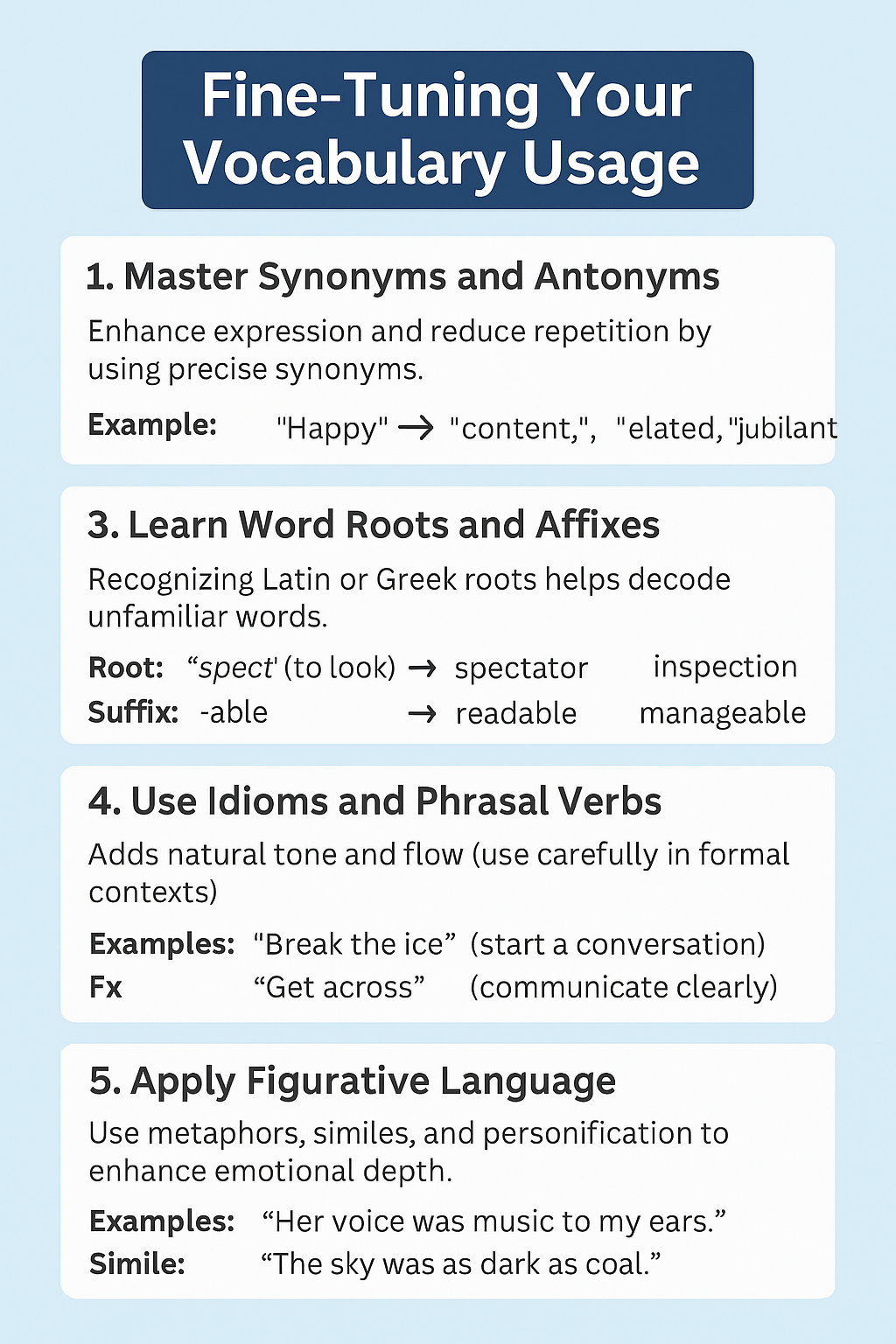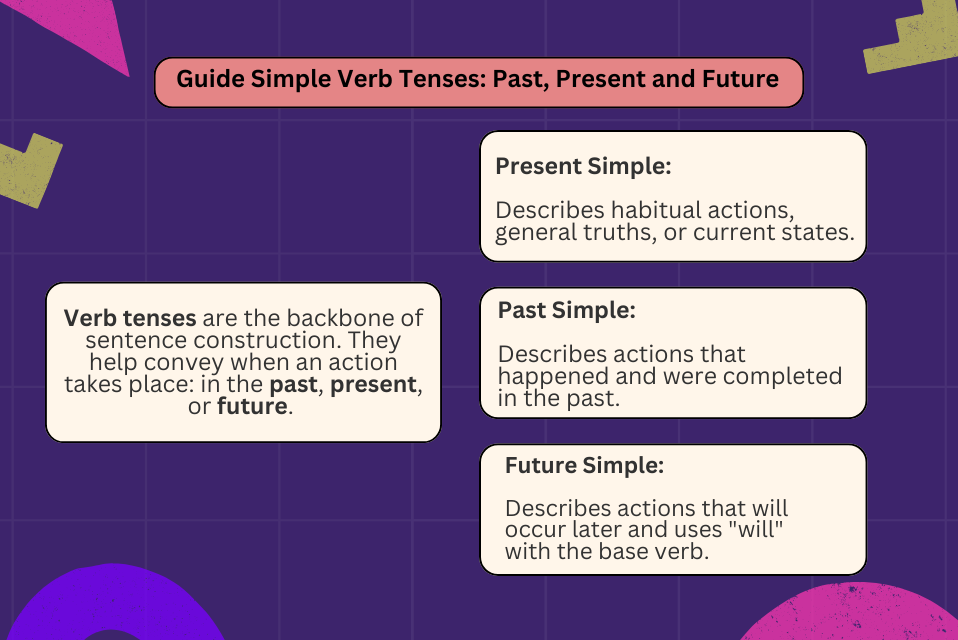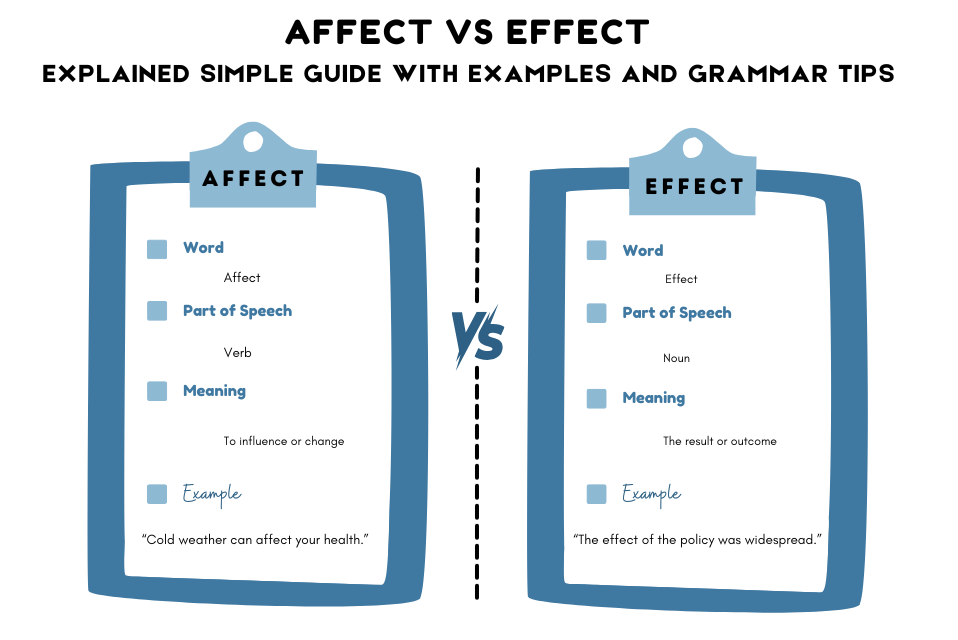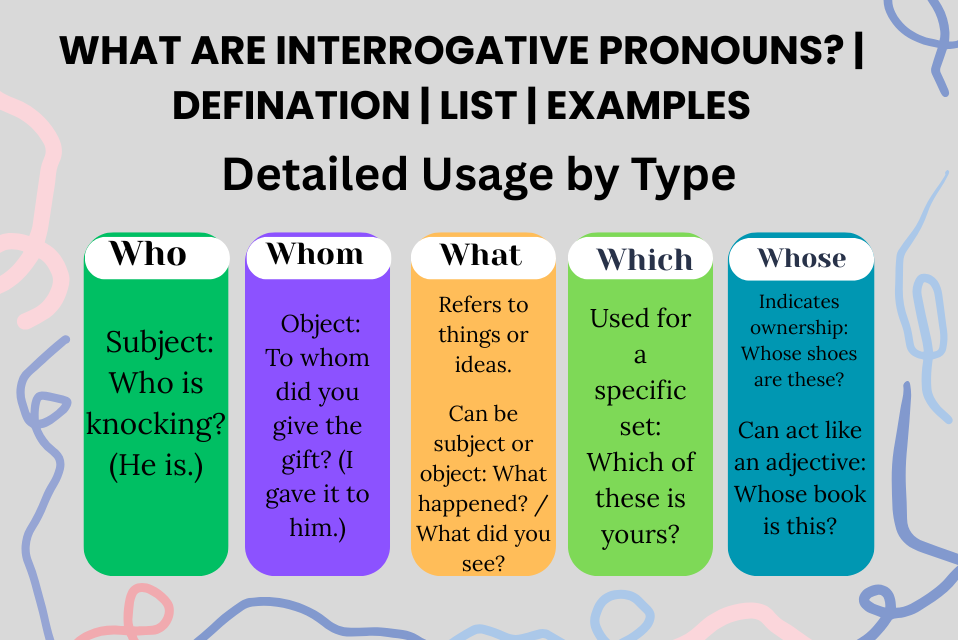Introduction
Vocabulary is the foundation of effective writing. The right words enhance clarity, add nuance, and enrich expression. Whether you’re composing a formal essay, a business report, or a creative story, a rich and diverse vocabulary enables you to communicate ideas with precision and impact.
Improving vocabulary is not an overnight achievement. It requires consistent practice and a willingness to engage deeply with language. This guide offers a structured approach to expanding your vocabulary for writing, complete with actionable strategies, examples, and tools to make the process both engaging and effective.
What is Vocabulary in Writing?
Vocabulary in writing refers to the words and phrases a writer uses to convey ideas, describe scenarios, and express emotions. It involves not only word choice but also the ability to use words creatively and contextually. A robust vocabulary helps writers:
- Avoid repetition
- Enhance engagement
- Express complex ideas with clarity
- Communicate subtle nuances
Why Vocabulary Matters in Writing
A strong vocabulary acts as a writer’s toolkit. It empowers you to:
- Increase Clarity: Precise word choices ensure your message is understood (e.g., “dazzling” vs. “bright”).
- Improve Engagement: Diverse language captures and retains readers’ attention.
- Convey Nuance: Words like “elated” or “content” capture emotional subtleties better than “happy.”
Understanding Vocabulary Levels
To build your vocabulary effectively, understand its levels:
- Basic Vocabulary: Common, everyday words (e.g., “house,” “food”).
- Intermediate Vocabulary: More specific and varied (e.g., “residence,” “meal”).
- Advanced Vocabulary: Formal, academic, or less common terms (e.g., “domicile,” “cuisine”).
Note: Balance sophistication with readability to maintain accessibility for your audience.
Strategies to Improve Vocabulary in Writing
1. Read Regularly
Reading widely exposes you to new words and their usage in context.
What to read:
- Books (fiction and non-fiction)
- Newspapers and magazines
- Academic journals and blogs
Tip: Highlight unfamiliar words, look up their definitions, and note their usage.
2. Use Dictionaries and Thesauruses Wisely
- Dictionaries: Learn definitions, pronunciation, and usage.
- Thesauruses: Find synonyms, but verify meanings and contexts to avoid misuse.
3. Learn Words in Context
Instead of memorizing word lists, study how words function in sentences.
Example:
- “She was ecstatic about the news.”
- “He was overjoyed to see his old friends.”
4. Keep a Vocabulary Journal
Create entries for new words:
- Definition
- Example sentence
- Synonyms and antonyms
- Word root or origin
Review weekly to reinforce retention.
5. Practice Writing with New Vocabulary
Apply new words in context:
- Journaling
- Short stories or essays
- Creative writing prompts
Prompt Idea: “Write a paragraph about your favorite season using at least three new vocabulary words.”
6. Engage in Conversations
Practicing vocabulary through speech helps reinforce retention and natural usage.
- Join writing groups or language exchanges
- Participate in debates or presentations
Fine-Tuning Your Vocabulary Usage

1. Master Synonyms and Antonyms
Enhance expression and reduce repetition by using precise synonyms.
Example:
- “Happy” → “content,” “elated,” “jubilant”
2. Enhance Sentence Structure
Use varied vocabulary to enrich sentence flow.
Before: The weather was very bad.
After: The weather was unbearably stormy.
3. Learn Word Roots and Affixes
Recognizing Latin or Greek roots helps decode unfamiliar words.
- Root: “spect” (to look) → “spectator,” “inspection”
- Suffix: “-able” → “readable,” “manageable
4. Use Idioms and Phrasal Verbs
Adds natural tone and flow (use carefully in formal contexts).
Examples:
- “Break the ice” (start a conversation)
- “Get across” (communicate clearly)
5. Apply Figurative Language
Use metaphors, similes, and personification to enhance emotional depth.
Examples:
- Metaphor: “Her voice was music to my ears.”
- Simile: “The sky was as dark as coal.”
Reinforcing Vocabulary
1. Set Specific Goals
Choose 3–5 new words weekly and apply them in writing.
Example Goal: “Use five new words in journal entries this week.”
2. Read Aloud
Reading aloud activates memory and improves pronunciation.
3. Use Prompts and Exercises
Creative exercises make vocabulary practice engaging.
4. Join Writing Communities
Gain feedback and exposure to new vocabulary from peers.
Useful Tools and Resources
- Merriam-Webster Dictionary
- Thesaurus.com
- Anki or Quizlet for flashcards
- WordHippo (for nuanced synonyms)
- Grammarly (contextual word suggestions)
Conclusion
Improving your vocabulary is a journey of exploration and practice. A richer vocabulary equips you with the tools to express yourself more clearly, persuasively, and creatively. Through reading, writing, and meaningful engagement with language, you can develop a writing style that is articulate, precise, and impactful.
Start with small, consistent steps, and over time, your vocabulary will grow and so will your confidence as a writer.
FAQs: How to Improve Vocabulary in Writing
Q1: How long does it take to improve vocabulary for writing?
It varies by individual, but with consistent reading, writing, and review, noticeable improvement can happen in 4–6 weeks. The key is steady practice over time.
Q2: Should I focus on advanced vocabulary?
Not necessarily. Use vocabulary that fits your audience and purpose. Clarity and precision matter more than complexity. It’s better to use common words well than to misuse advanced ones.
Q3: Can watching movies or listening to podcasts help?
Yes! These mediums expose you to conversational language, idiomatic expressions, and real-world usage, making new vocabulary easier to understand and remember.







